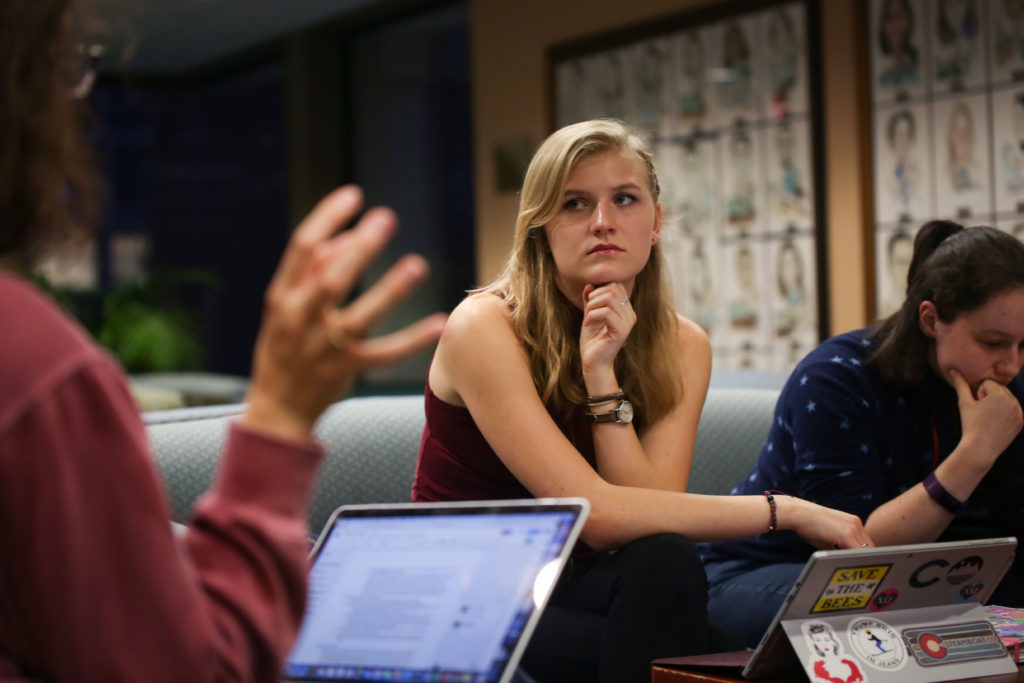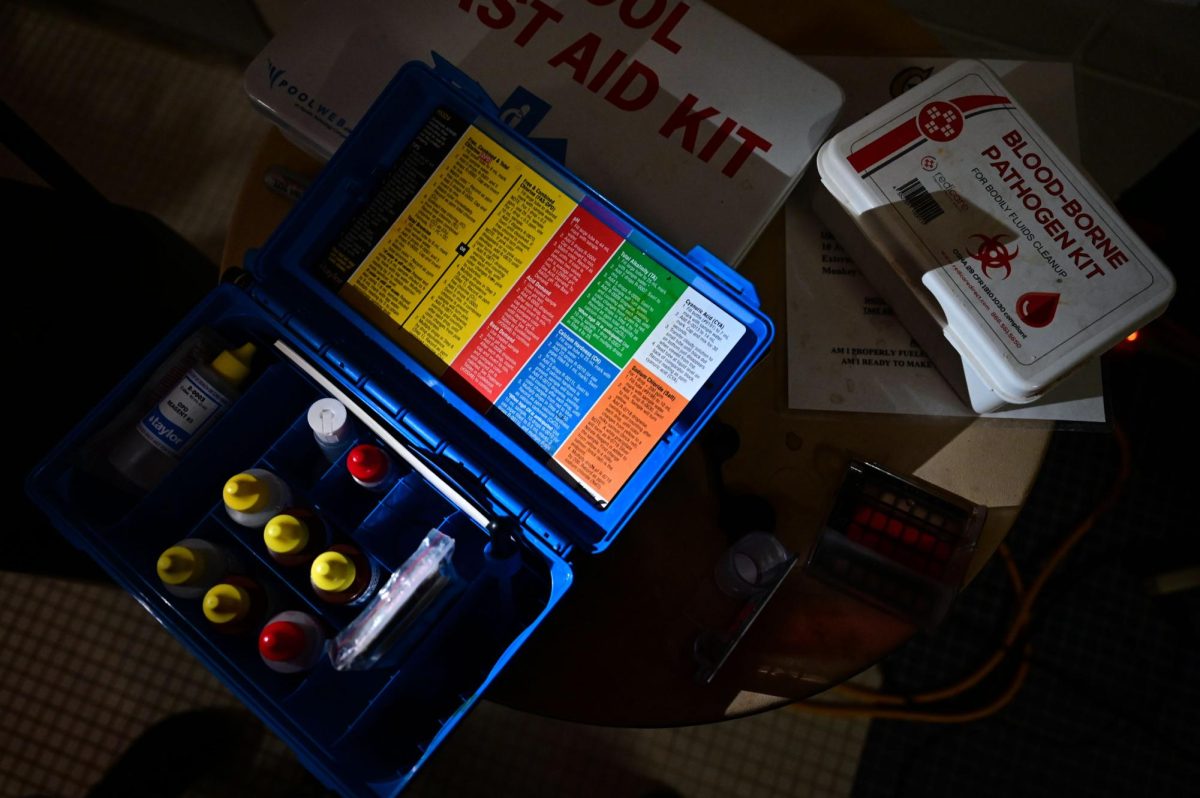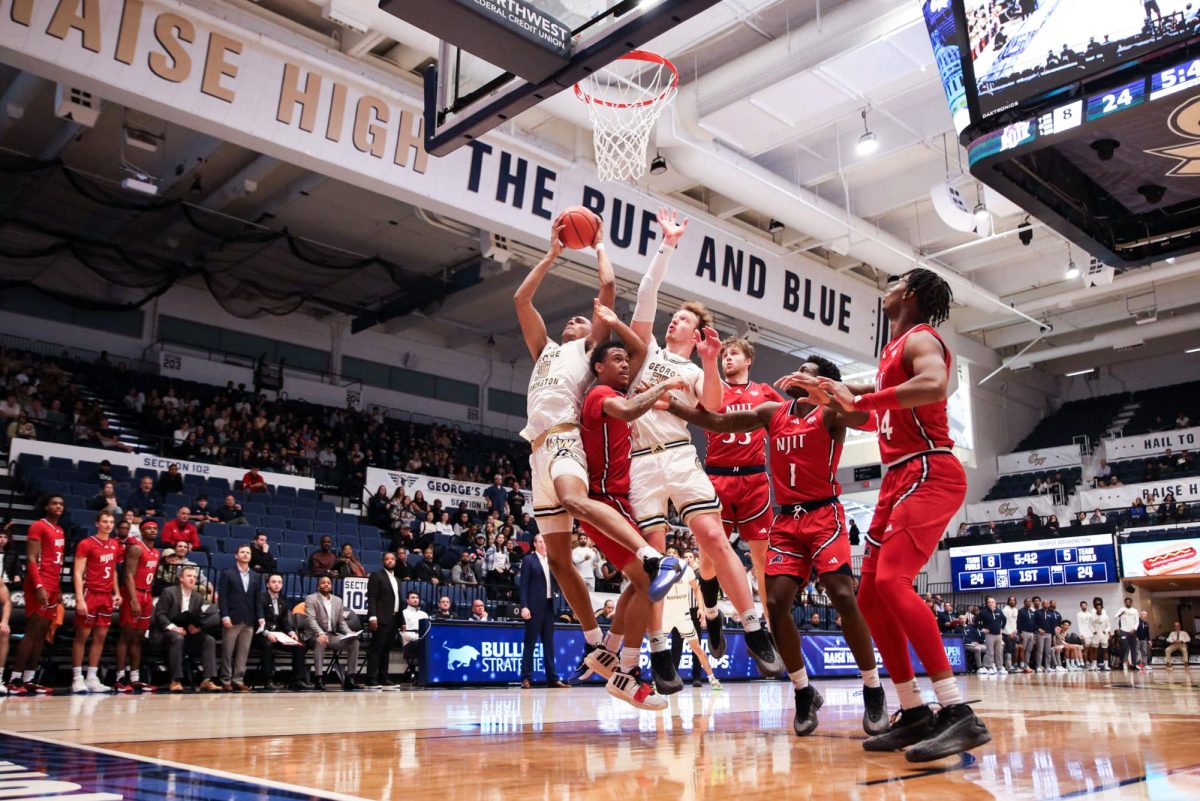GW may have its first club women’s ice hockey team in almost 16 years by spring.
As the fall semester begins, sophomore Libby Lukens has been working to bring a women’s ice hockey team to the ice this spring as the team’s newly-elected president. Lukens said she has wanted to continue her 15-year ice hockey career at college but could not find a women’s team to join and has garnered support from other women in the same situation.
“Since I got here it’s only been during the summer and during the holiday, but whenever I can, I try to play,” Lukens said.
There are currently seven women’s club teams and 20 co-ed club teams available for women to join at GW. The University last had a women’s ice hockey team in 2002, but its tenure was short-lived.
As president, Lukens organized general body interest meetings, helped create the team’s constitution and coordinated with the team’s six-person executive board with the goal of being a registered club team with the Center for Student Engagement by next semester.
Lukens – who started playing hockey when she was 4 years old – was initially interested in trying out for the men’s team, but did not want to go through the hassle of bringing her gear out from her hometown of Steamboat Springs, Colo., in case she did not make the cut, she said.
The sophomore may not have had the chance to build this team if her mother had not sent an email to David Baratta, an assistant coach for the men’s club ice hockey team, telling him Lukens was interested in playing at GW, she said.
Baratta got in contact with a list of women – including Lukens – who had expressed interest in the men’s team and proposed starting a women’s team, Lukens said.
While each season there are usually three to four women interested in playing hockey with the men’s team, Baratta said this year the number jumped to about five or six. When he saw the increase in women interested in the team, he went to Lukens and said he was “happy to assist” her in building a women’s program.
“You potentially have six people here, that’s a starting lineup,” Baratta said. “If you look at club women’s teams at other schools, some will have a full 20-player roster, but if you can get yourself into that 10 to 15 roster size, I think you’re good to go.”
Baratta has helped the women find rinks to practice at, leagues to join and will help schedule games when the time comes, he said.
From the start of the process, Baratta and the men’s team have assisted Lukens and the women’s team leadership by advertising informational meetings on their team website and social media.
Lukens estimated they have about 15 interested players based on attendance of the first general body meeting. Lukens said many of the interested players were inspired by the 2018 U.S. Olympic Women’s Ice Hockey team taking gold in the 2018 Winter Olympics to get back on the ice or strap on skates for the first time.
“What’s interesting is that we have a lot of girls who have played before and have hockey gear, but at the same time, we have girls who are very interested and never really played before,” Lukens said.
The men’s club ice hockey team currently plays in the Atlantic Coast Collegiate Hockey League of the American Collegiate Hockey Association, which includes Georgetown, Navy and Saint Joseph’s.
The women’s team can follow the lead of its male counterparts and apply to join Division II of the ACHA. Four Atlantic 10 schools – Massachusetts, Rhode Island, St. Bonaventure and Saint Joseph’s – offer club women’s ice hockey teams.
In the next month, Lukens said she hopes to get the team constitution ratified by its members and send in the club team application to the CSE.
Once they are approved as a club team, Baratta said that the women will need to focus on their operational needs: finding a coach, a general manager and getting ice time at local rinks.
Due to the popularity of ice hockey in D.C., finding a rink to play at is difficult even for the established men’s club team. This season, the men are splitting their homestands at three separate rinks due to limited availability of ice time.
Despite the administrative challenges ahead of the team, Lukens is confident that her team will be able to get on the ice by the spring semester.
Lukens estimated each player would have to pay about $650 to cover ice time, a cost she hopes to mitigate through team fundraising. It has also been difficult getting people to donate gear for women who are interested in playing but do not have the right equipment, she said.
“I want to be able to see us all work together as a team and get us skating,” Lukens said.
Once the women’s team gets up and running, Baratta said he wants the men’s and women’s club ice hockey teams to be seen as two parts of one program.
“I think it would be foolish not to try and leverage each other to generate interest on campus in hockey,” Baratta said.





